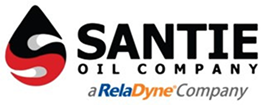In general, most facilities are completely unaware of the dangers of an inefficient workflow and storage setup. When these things are lacking, the facilities risk worker safety, reduced productivity, or potentially life-threatening outcomes. In this article, we help you get ahold of your industrial oil handling workflow to help improve efficiency and secure safety.
Understand the Space Requirements
The space you store the lubricants must be safe, interchangeable, and highly functional. The handling workflow is not sustainable in a poorly designed space. Consider some of these techniques for outlining the space:
- Limited entries for adequate logging of when and who accesses the supplies
- Well-marked and visible loading zones for new oils
- Thorough tracking of all inbound lubricants
- Easy access to filtered lubricants
- Proper and adequate protection devices in an easily accessible location
- Fireproof storage containers for top-up canisters
This will help the primary storage facility, but it’s best to consider designating a storage space for bulk inventory.
Quality Control Features
Without quality control features, you risk accepting the incorrect components or distributing the incorrect lubricants. Quality control can also help ensure a product’s cleanliness and that it meets the standards and usage protocols before administration. Oil analysis can highlight performance properties, concentration, and thickness.
Understand Your Dispensing Options
Often, a facility needs to access the bulk storage and transfer the oils to a top-up canister. When this happens, it’s best and highly recommended to use a filtration system on transfer. Improper dispensing of any oil, grease, or lubricant can lead to contamination or degradation. Additionally, you risk exposing the matter to atmospheric conditions and deeming it useless.
Utilize Proper Top-Up Storage Techniques
Another critical factor in ensuring no risk of contamination is proper storage techniques. Storage, in general, is one of the most feasible ways to ensure good housekeeping and safety. Seal everything in air-tight, washable containers for future use. Without adequate seal techniques on top-up containers, the interior and matter are at risk of atmospheric contamination through dust, lint, or personal germs.
Follow Suitable Shelf-Life Specifications
Respecting the shelf-life of each compound is a must. By following a first in, first out rule, you can ensure the oldest gets used first and doesn’t go to waste. This also ensures you do not administer outdated compounds. Each grease, oil, and lubricant will have its own shelf-life. Don’t assume they’re all the same.
Improving your industrial oil handling workflow can be challenging in established facilities. Still, the value in ensuring worker safety and quality control will benefit your business and distribution levels.
Santie Oil Company is an industry-leading Castrol oil distributor, and we guarantee adequate workflow and handling of all our products. Connect with us today to learn more about how you can set up your facility’s workflow.

